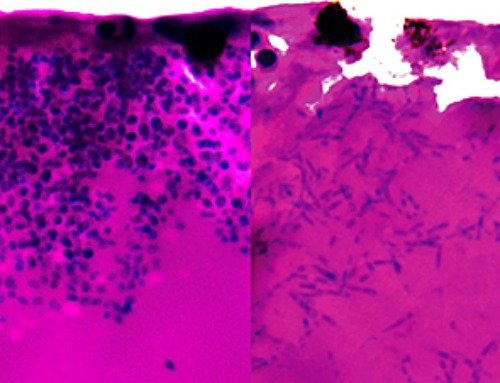Many people with long COVID feel that science is failing them. Neglecting them could make the pandemic even worse.
While watching the scientific community grapple with long COVID, I have thought a lot about a scene in The Lord of the Rings. Faced with impending doom, the hobbits Merry and Pippin ask the powerful treelike ents for help. But despite the urgency of the situation, the ents are slow. They meet for hours, and after a lot of deliberation, they announce that they’ve agreed that the hobbits are not orcs. The hobbits, who already knew that, are shocked. They were hoping for more.
In June 2020, when I started reporting on long COVID, few scientists or physicians knew that it existed—and many doubted that it did. The common wisdom was that people infected with SARS-CoV-2 mostly get mild symptoms that resolve after two weeks. And yet, thousands of “long-haulers” had already been debilitated by months of extreme fatigue, brain fog, breathing difficulties, and other relentless, rolling problems. More than a year later, several clinics care for long-haulers, while the biomedical community, like the ents, has begun to identify long-COVID patients as long-COVID patients. But some researchers still hesitate to recognize long COVID if it doesn’t present in certain ways; they’re running studies without listening to patients, and they’ve come up with their own arguably unhelpful name for the disease. Like Merry and Pippin, long-haulers are growing frustrated that what is self-evident to them—their condition is very real and in need of urgent attention from those with power—is taking a worrying amount of time to be acknowledged and acted upon.
After a year and a half, the risk of long COVID, for both unvaccinated and vaccinated people, is one of the pandemic’s biggest and least-addressed unknowns. The condition affects many young, healthy, and athletic people, and even now “none of us can predict who’s going to have persistent symptoms,” Lekshmi Santhosh, the medical director of a long-COVID clinic at UC San Francisco, told me. A small number of fully vaccinated people have become long-haulers after breakthrough infections, although no one knows how common such cases are, because they aren’t being tracked. Mysteries abound; meanwhile, millions of long-haulers are sick.
Long-haulers were the ones who described, defined, and drew attention to their condition: “Patients collectively made long Covid,” two long-haulers, the geographer Felicity Callard and the archaeologist Elisa Perego, wrote in a historical review. Now many feel that their expertise is being ignored and their hard-won knowledge is being excluded from investigations into their own illness. The message seems to be: Thanks for everything; academia can take it from here.
This attitude is slowing down long-COVID research and skewing its focus. Both long-haulers and researchers who work with them have told me about flawed studies that paint an inaccurate picture of the condition, or clinics that are recommending potentially harmful treatments. Many researchers, they argue, are missing the full picture because they’re treating long COVID as a completely new entity, and ignoring telling similarities to other complex illnesses such as myalgic encephalomyelitis/chronic fatigue syndrome (ME/CFS).
“The interest of the biomedical community is welcome—we wanted their attention!” says Athena Akrami, a neuroscientist at University College London who is part of the Patient-Led Research Collaborative, a group of long-haulers who have been studying their own community. But many academics, as they are wont to do, are contorting questions about long COVID to fit their preexisting research agendas. “In an ideal scenario with infinite resources, scientists could take an intellectual interest in some peculiarity of the condition,” Akrami told me. “But this is the real world, and limited resources need to be distributed according to the needs of patients.”
When I first spoke with Akrami, last year, she was on day 76 of her symptoms. This year, I called her on day 526. She has improved enough to take “long” half-hour walks without crashing—in the gaps between monthly relapses that completely incapacitate her for a week. Many long-haulers partially recover after a few months, or learn to manage their symptoms. But some “first-wavers” are still dealing with cycles of serious illness. Through 2020’s spring, summer, and winter surges, Donald Trump’s departure and Joe Biden’s arrival, the vaccine rollout and Delta’s ascent, they’ve been struggling to work, concentrate, or exercise. Many have been told by medical professionals that they’re just having anxiety or making up their symptoms. Even now, “it happens more often than not,” Lisa McCorkell of the Patient-Led Research Collaborative told me.
Despite long-haulers’ fight for recognition, any discussion of the pandemic still largely revolves around two extremes—good health at one end, and hospitalization or death at the other. This ignores the hinterland of disability that lies in between, where millions of people are already stuck, and where many more may end up. The coronavirus is here to stay, and even as vaccines diminish the threat of hospitalization and death, we don’t know yet how well they will protect against the disability of long COVID. The choice we make about how to study this condition will define the toll that SARS-CoV-2 takes for years to come….
News
We May Never Know if AI Is Conscious, Says Cambridge Philosopher
As claims about conscious AI grow louder, a Cambridge philosopher argues that we lack the evidence to know whether machines can truly be conscious, let alone morally significant. A philosopher at the University of [...]
AI Helped Scientists Stop a Virus With One Tiny Change
Using AI, researchers identified one tiny molecular interaction that viruses need to infect cells. Disrupting it stopped the virus before infection could begin. Washington State University scientists have uncovered a method to interfere with a key [...]
Deadly Hospital Fungus May Finally Have a Weakness
A deadly, drug-resistant hospital fungus may finally have a weakness—and scientists think they’ve found it. Researchers have identified a genetic process that could open the door to new treatments for a dangerous fungal infection [...]
Fever-Proof Bird Flu Variant Could Fuel the Next Pandemic
Bird flu viruses present a significant risk to humans because they can continue replicating at temperatures higher than a typical fever. Fever is one of the body’s main tools for slowing or stopping viral [...]
What could the future of nanoscience look like?
Society has a lot to thank for nanoscience. From improved health monitoring to reducing the size of electronics, scientists’ ability to delve deeper and better understand chemistry at the nanoscale has opened up numerous [...]
Scientists Melt Cancer’s Hidden “Power Hubs” and Stop Tumor Growth
Researchers discovered that in a rare kidney cancer, RNA builds droplet-like hubs that act as growth control centers inside tumor cells. By engineering a molecular switch to dissolve these hubs, they were able to halt cancer [...]
Platelet-inspired nanoparticles could improve treatment of inflammatory diseases
Scientists have developed platelet-inspired nanoparticles that deliver anti-inflammatory drugs directly to brain-computer interface implants, doubling their effectiveness. Scientists have found a way to improve the performance of brain-computer interface (BCI) electrodes by delivering anti-inflammatory drugs directly [...]
After 150 years, a new chapter in cancer therapy is finally beginning
For decades, researchers have been looking for ways to destroy cancer cells in a targeted manner without further weakening the body. But for many patients whose immune system is severely impaired by chemotherapy or radiation, [...]
Older chemical libraries show promise for fighting resistant strains of COVID-19 virus
SARS‑CoV‑2, the virus that causes COVID-19, continues to mutate, with some newer strains becoming less responsive to current antiviral treatments like Paxlovid. Now, University of California San Diego scientists and an international team of [...]
Lower doses of immunotherapy for skin cancer give better results, study suggests
According to a new study, lower doses of approved immunotherapy for malignant melanoma can give better results against tumors, while reducing side effects. This is reported by researchers at Karolinska Institutet in the Journal of the National [...]
Researchers highlight five pathways through which microplastics can harm the brain
Microplastics could be fueling neurodegenerative diseases like Alzheimer's and Parkinson's, with a new study highlighting five ways microplastics can trigger inflammation and damage in the brain. More than 57 million people live with dementia, [...]
Tiny Metal Nanodots Obliterate Cancer Cells While Largely Sparing Healthy Tissue
Scientists have developed tiny metal-oxide particles that push cancer cells past their stress limits while sparing healthy tissue. An international team led by RMIT University has developed tiny particles called nanodots, crafted from a metallic compound, [...]
Gold Nanoclusters Could Supercharge Quantum Computers
Researchers found that gold “super atoms” can behave like the atoms in top-tier quantum systems—only far easier to scale. These tiny clusters can be customized at the molecular level, offering a powerful, tunable foundation [...]
A single shot of HPV vaccine may be enough to fight cervical cancer, study finds
WASHINGTON -- A single HPV vaccination appears just as effective as two doses at preventing the viral infection that causes cervical cancer, researchers reported Wednesday. HPV, or human papillomavirus, is very common and spread [...]
New technique overcomes technological barrier in 3D brain imaging
Scientists at the Swiss Light Source SLS have succeeded in mapping a piece of brain tissue in 3D at unprecedented resolution using X-rays, non-destructively. The breakthrough overcomes a long-standing technological barrier that had limited [...]
Scientists Uncover Hidden Blood Pattern in Long COVID
Researchers found persistent microclot and NET structures in Long COVID blood that may explain long-lasting symptoms. Researchers examining Long COVID have identified a structural connection between circulating microclots and neutrophil extracellular traps (NETs). The [...]





















